

Last updated on

Google’s rollout and subsequent withdrawal of AI Overviews (AIOs) grabbed significant attention within the SEO community in recent months.
Yet, another transformation of equal importance went largely unnoticed: Google’s evolution from a mere search engine into a marketplace for shopping queries.
While AIOs have undeniable impact—initial analysis revealed a -8.9% decrease in visibility for pages referenced in AIOs compared to those ranking at the top of traditional web search results—Google’s recent move to scale back 50-66% of AIOs pales in comparison to its robust offering of SERP and AI features tailored for ecommerce queries, which prove equally influential.
To gain deeper insights into the latest trends in shopping queries, I examined 35,305 keywords spanning categories such as fashion, beds, plants, and automotive in the US over the past five months using SEOClarity.
Here are the findings:
In summarizing the ecommerce landscape, where I discuss Google’s shift from a search engine to an ecommerce marketplace in response to Amazon’s dominant position:
Imagine you’re searching for kayaks (perfect for summertime!). Here’s how Google’s new shopping experience compares:
On desktop (when logged in), Google now displays product filters on the left sidebar and product carousels prominently in the center, above the classic organic search results—and ads, naturally.
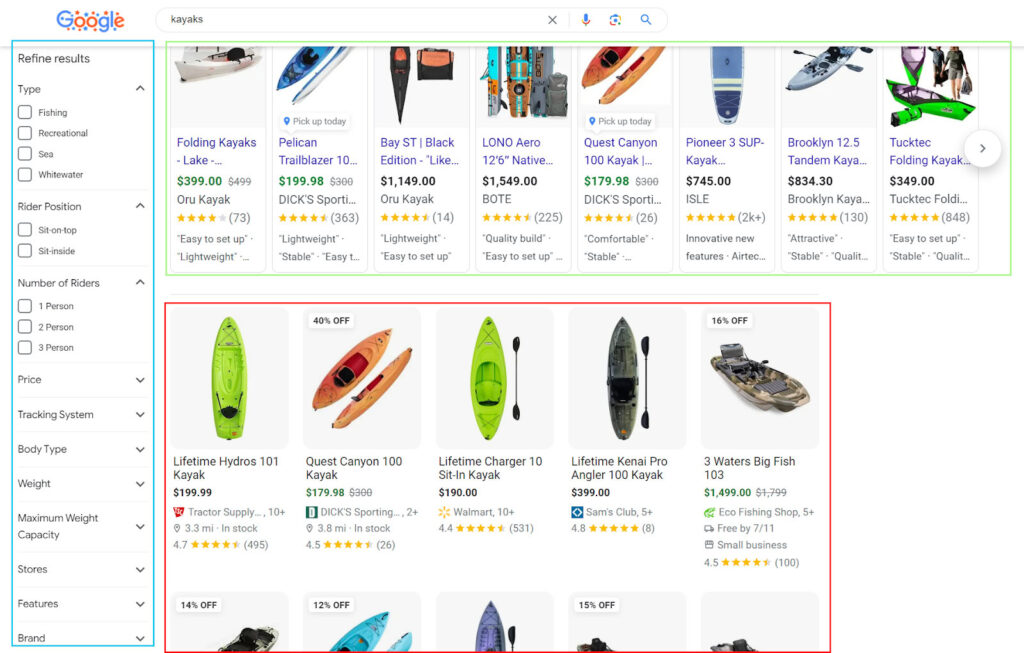
On mobile, product filters appear at the top, ads are positioned above organic results, and popular product carousels are featured prominently.
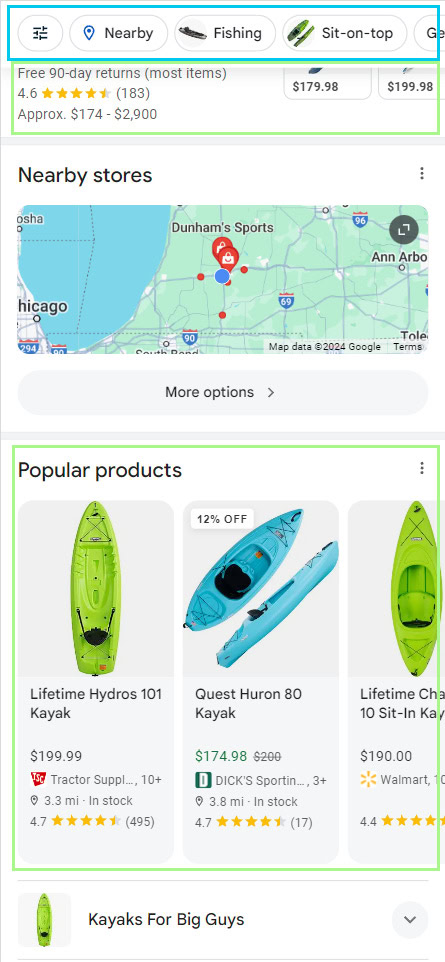
This setup closely resembles Amazon’s interface, which is intentional.
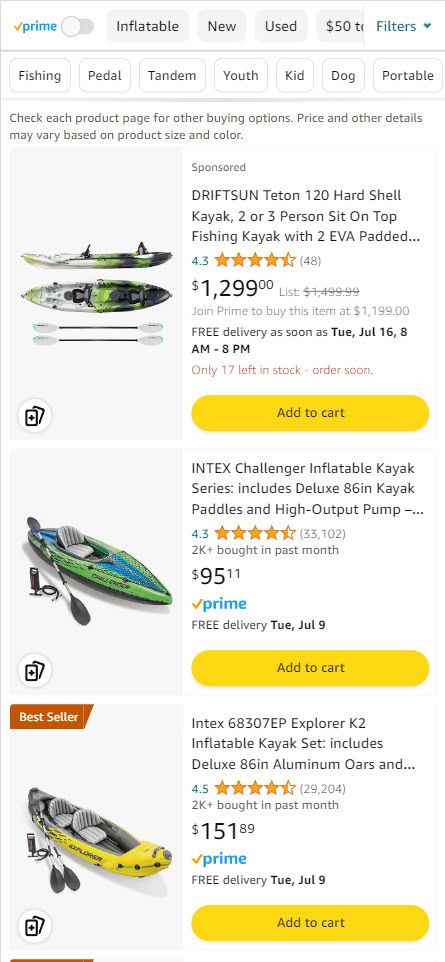
Google’s revamped shopping experience allows users to browse products across platforms like Amazon, Walmart, Ebay, Etsy, and more.
From an SEO perspective, the elevated visibility of product grids (listings) and filters is likely to have a significant impact on click-through rates (CTR), organic traffic, and, ultimately, revenue.
Out of 35,305 keywords analyzed, 30,172 (85.6%) display product listings, which are represented by the free product carousels, marking them as the most prominent SERP feature in shopping searches.
In February, product listings appeared in position 1 for 39% of queries and in position 3 for 15% of queries.
By July, these figures shifted to 43% for position 1 and 13.6% for position 3. This indicates that Google has elevated the visibility of product listings higher up in the SERPs.
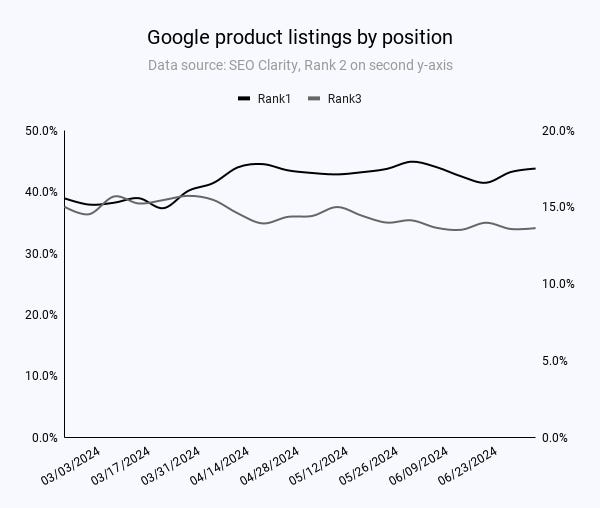
This transition from traditional web links to product images underscores product listings as a pivotal feature in Google’s evolution. The heightened prominence signals Google’s strong commitment to this new model.
Following product listings, which appear in 85.6% of queries, image carousels are the next most prevalent SERP feature, appearing in 61.8% of queries.
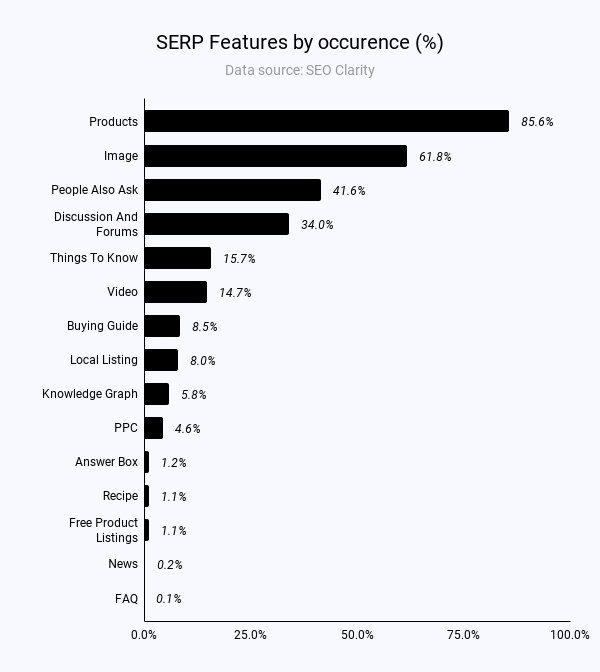
Image carousels hold significant sway because shopping is visually driven. The right product image can swiftly spur a purchase, contrasting with customers lingering in the decision-making process.
Retailers and ecommerce brands invest heavily in top-notch product photography and must devote equal attention to optimizing images for Google Search, despite organic traffic typically being lower than web rankings.
Google is currently experimenting with “generate image with AI,” a feature enabling users to create product images based on prompts and then view similar real products.
This AI-driven capability, while flying under the radar of AI Overviews (AIOs), holds potential to simplify product discovery for users, potentially impacting user behavior positively.
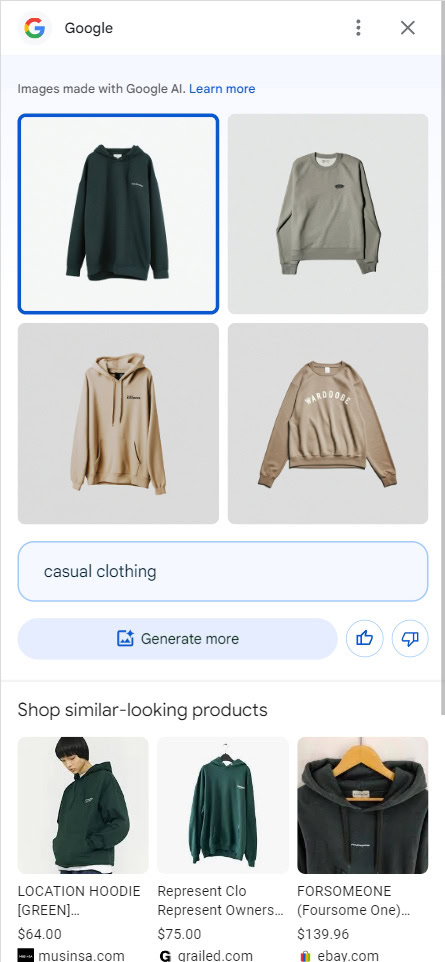
Most SERP features maintained consistent visibility from February to July, except for Discussions & Forums, which increased from 28.7% to 34% of all queries, marking a gain of 5.3 percentage points.
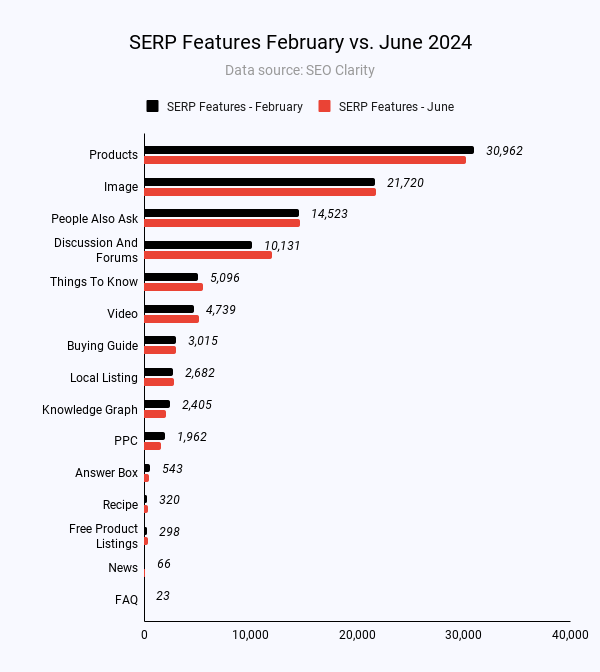
This uptick in Discussions & Forums aligns with Reddit’s remarkable surge in SEO visibility over the past year, now rivaling the traffic levels of Facebook and Amazon.
Google’s Discussions & Forums feature highlights threads from platforms like Reddit and Quora, where users seek genuine, unbiased opinions from fellow consumers. This contrasts with potentially biased review articles, reflecting consumer awareness.
To address varying review quality, Google emphasizes user-generated content from forums. In “Free Content,” I referenced a German study titled “Is Google getting worse?” which noted:
The prominence of Discussions & Forums illustrates that high visibility in SERP features does not necessarily equate to high impact.
SERP features are typically perceived to appear consistently in search results, yet Google frequently experiments with them.
As a result, SERP features that influence click-through rates can introduce significant variability into standard SEO metrics such as CTR, clicks, and even revenue.
Simultaneously, Google’s toggling of these features can provide SEO professionals with insights into their impact on SEO metrics.
For instance, consider the Things To Know feature (TTK), which answers common questions about a product with links to relevant websites.
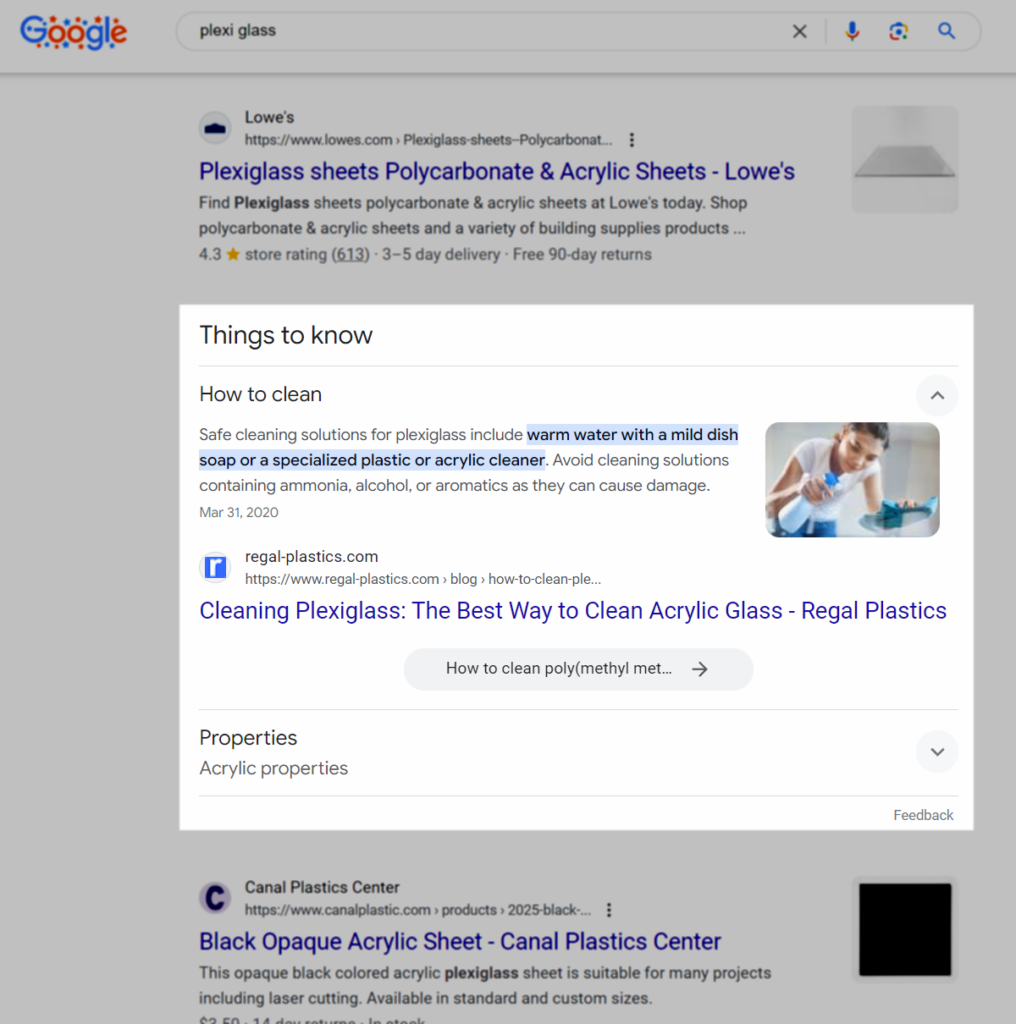
After maintaining stable visibility for months, Google suddenly reduced the number of TTKs by -37.5% for a month, only to restore them to previous levels later.
During this period, websites linked in TTK may have experienced a decrease in organic traffic. Since TTK data isn’t reported in Search Console, these sites may wonder about the drop in organic traffic despite stable rankings.
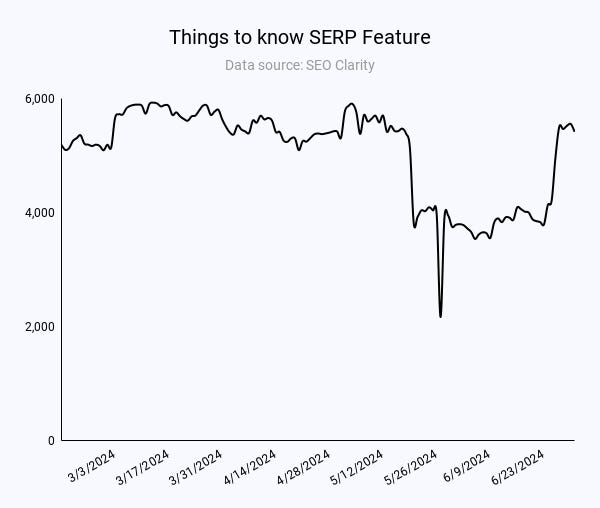
Returning to the earlier kayak example, Google tests variations such as deals and carousel segments (“Kayaks For Beginners”), illustrating the challenge of obtaining consistent data and underscoring the importance of monitoring SERP features closely.

Original news from SearchEngineJournal